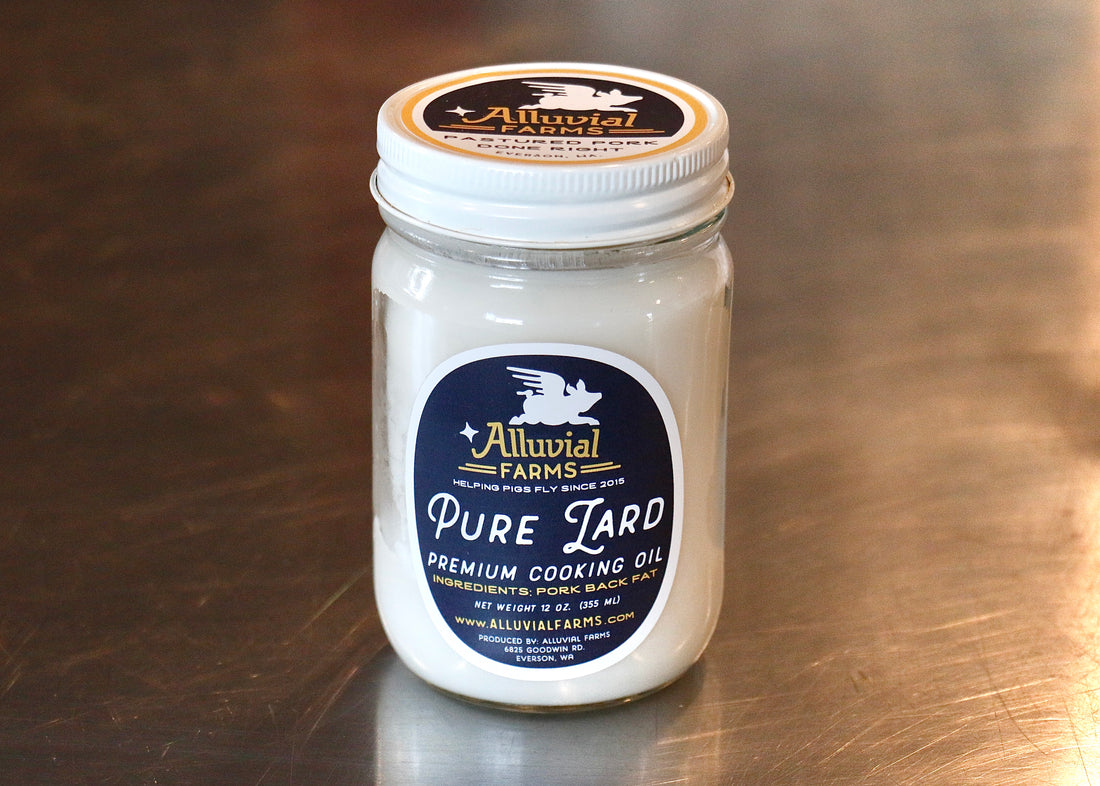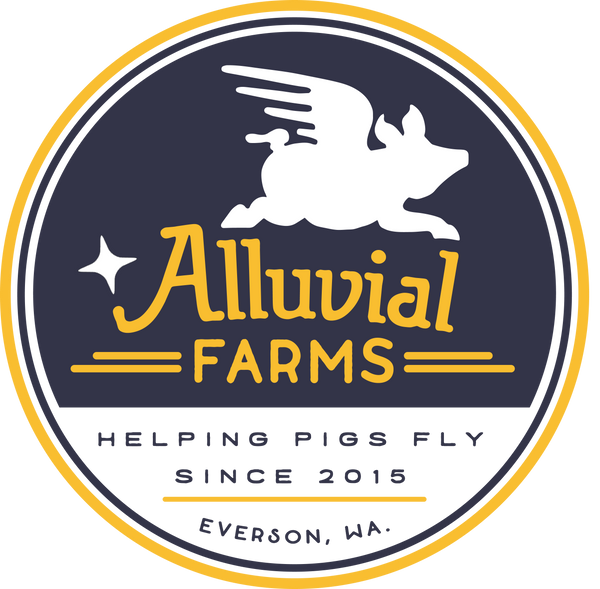
Turn Alluvial Farms Leaf Fat into Gifts and More
Leaf fat is on sale now until Sunday December 10. Read below for more information on what leaf fat really is, how to render it for use in cooking, and why our butcher's label it as "leaf lard" and not "leaf fat" (Just kidding, I actually don't know).
Do you have questions about the difference and utility of pork back fat, pork leaf fat, and pure lard cooking oil? Do you want to learn how to turn affordable, naturally grown, local pork leaf fat into gifts and more? Well you are not alone.
Did you know you can use rendered leaf fat to make wonderful homemade gifts like candles, salves, and soaps? It’s surprisingly simple—just search online for tutorials or recipes to guide you step-by-step. Whether you’re crafting for fun or to create thoughtful gifts, rendered leaf fat is a versatile and rewarding ingredient to work with!
This blog post was inspired by an intriguing email I received earlier this year from Linda in Bellingham, which sparked a conversation about the different types of pork fat products offered by Alluvial Farms. Her curiosity prompted me to delve deeper into the subject, and I realized that many others might have similar questions. So, let’s unravel the mysteries of pork fat together.
**Ordering Process:** Before we dive into the fat facts, let's address Linda's query about our farm store. To streamline your shopping experience, we operate primarily through online orders. Once you place your order, you can conveniently pick it up when it's ready. Click here to check out our recent blog post for a step-by-step guide on navigating our online store.

**Types of Pork Fat:** Linda mentioned receiving three different types of pork fat products in her recent quarter share: Lard oil, pork leaf fat, and pork back fat. Let's clarify these distinctions.
-**Pure lard Cooking Oil:**
Storage:
You can keep our cooking oil in the freezer until you are ready to use it. Once it has been thawed, keep it in the refrigerator for ultimate freshness. In the winter when our house is cooler, and I am cooking more, I will sometimes keep the lard on the counter so it stays softer and easier to use. You can also put the glass jar in the microwave for a minute or less if you need to liquify the lard to measure it out for a recipe.
Use:
I use the lard for cooking everything, in place of any other cooking oils. You can also use it in place of any fat in a baking recipe.
Alluvial Farms rendering process:
The lard cooking oil we make is primarily from pork back fat. This is because our butcher, Island Grown Farmers Cooperative (IGFC), will grind up back fat for us into 30# blocks. This is easier for us to render due to more surface area. We render in 150# batches, or about five 30# cases at a time. IGFC does not include the leaf fat in what they grind for us. The leaf fat is pulled off the pigs belly cavity and has a very thin membrane on it - which will disappear in rendering - but which makes it harder for the butcher to pass it through their grinder.

- **Pork Leaf fat:**
Leaf fat gets its name because of its appearance and placement inside the pig's body. It forms a thin, sheet-like layer of fat that surrounds and lines the abdominal cavity, particularly near the kidneys and around the viscera (organs). The shape and texture resemble a delicate "leaf," which is why it's referred to as leaf fat.
This unique structure also contributes to its purity, as it’s naturally protected and separates cleanly from the rest of the carcass. This is one reason it’s so prized for rendering into high-quality lard, especially for baking.
Alluvial Farms leaf fat labeling note: our butcher has always labeled the "leaf fat" as "leaf lard." This is incorrect, and confusing, since "lard" only means rendered fat. It should be labeled as "leaf fat." We are working with them to update the terminology on their packaging. They do an amazing job otherwise.

- **Pork Fat Back:** This fat comes from the back of the pig and may contain small muscle bits, resulting in flavorful cracklings when rendered. It's of incredible quality for cooking and baking. If you are a fancy baker, you may prefer the cleaner taste of leaf lard for certain recipes. I personally don't perceive any difference in the quality of the lard rendered from leaf fat and back fat.

**Rendering Process:** Now, let’s demystify the process of rendering pork fat. Whether you're using leaf fat, back fat, or a combination of both, the steps are relatively straightforward.
1. **Preparation:** Cut the fat into small pieces to increase the surface area, facilitating the rendering process. You can even grind it at home for more uniform cracklings.
2. **Rendering:** Place the fat in a pot or slow cooker over low heat. Allow it to melt gradually, keeping a close eye to prevent burning. Strain the liquid to remove any impurities, if you want, and store it in jars for future use. Freeze jars to keep fresh until you are ready to use. At that point you can keep in the fridge between uses to help it last longer.
The photo above shows a lard rendering day at Alluvial Farms with some Future Farmers of America students from Nooksack Valley High School, and Blanca Castillo from the Agriculture Career Explore Whatcom program at Cloud Mountain Farm Center.
**Leaf Fat vs. Back Fat:** When it comes to rendering, you might wonder whether to separate leaf fat and back fat. While leaf fat tends to be cleaner, back fat can yield delicious cracklings. However, in my experience, combining them doesn't significantly alter the final product's flavor.
**Pork Fat options in a custom pork share** In a quarter, half, or whole hog custom pork share you do get three types of pork fat. I always give a gift jar of lard cooking oil. Then there are two options for the leaf fat and back fat. We can pack them in the share unrendered, for you to render at home, or grind into your home made sausage, or trade with a friend who likes this kind of stuff. Or you can also choose - for an additional processing cost - to take delivery of the back and leaf fat as already rendered lard cooking oil, and we will substitute the raw product with the rendered product. This will come in the form of the pictured 12 oz. glass jars.
In conclusion, whether you're a seasoned chef or an adventurous home cook, understanding the nuances of pork fat can elevate your culinary creations. So, don't hesitate to experiment with different types of fat and rendering methods to discover your perfect flavor profile.
As for Linda and others like her, I hope this blog post sheds some light on their pork fat queries. Happy rendering and cooking!
Click here to purchase from our limited time only holiday leaf fat sale.

1 comment
This is really helpful! Thank you for sharing!